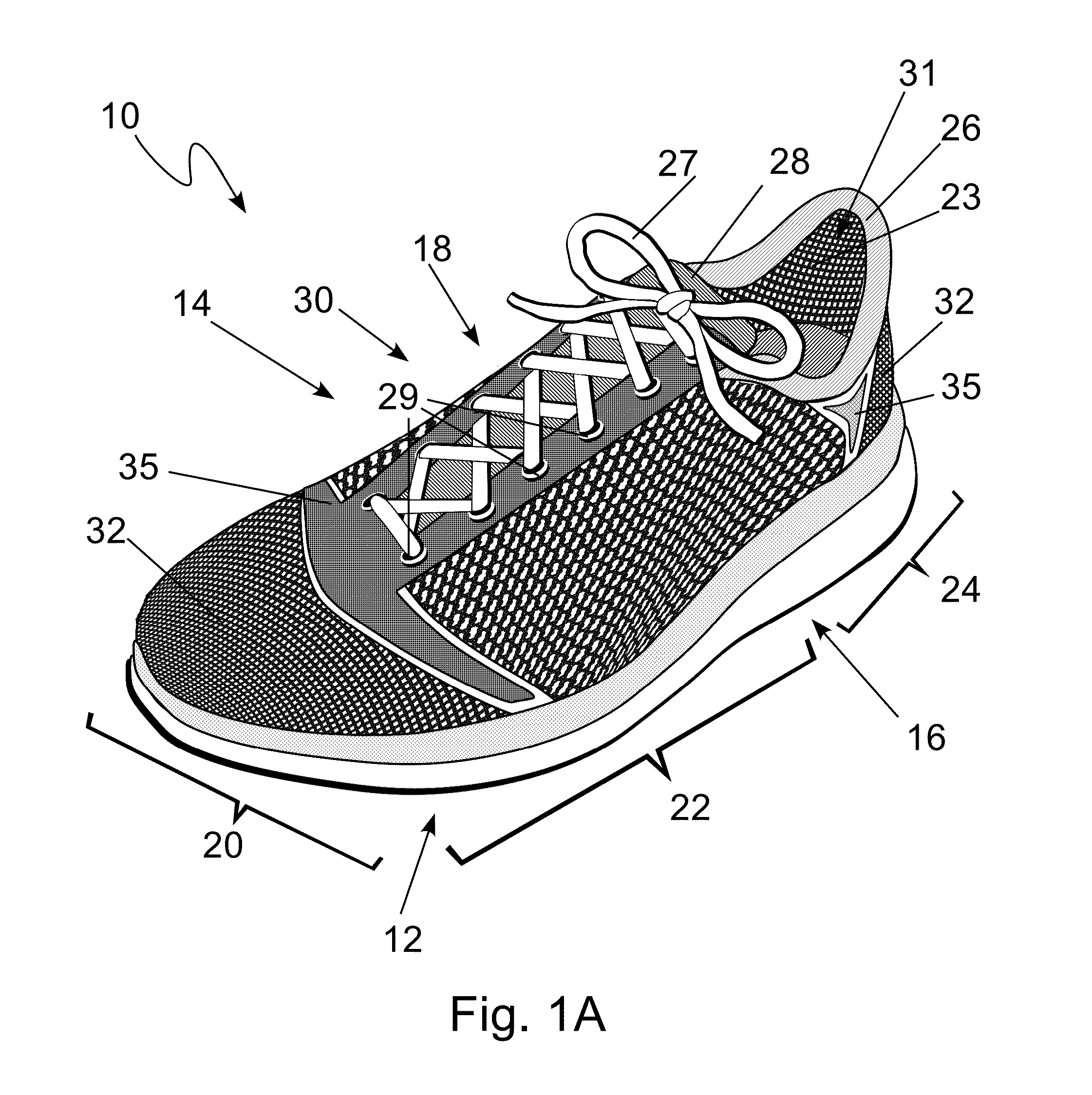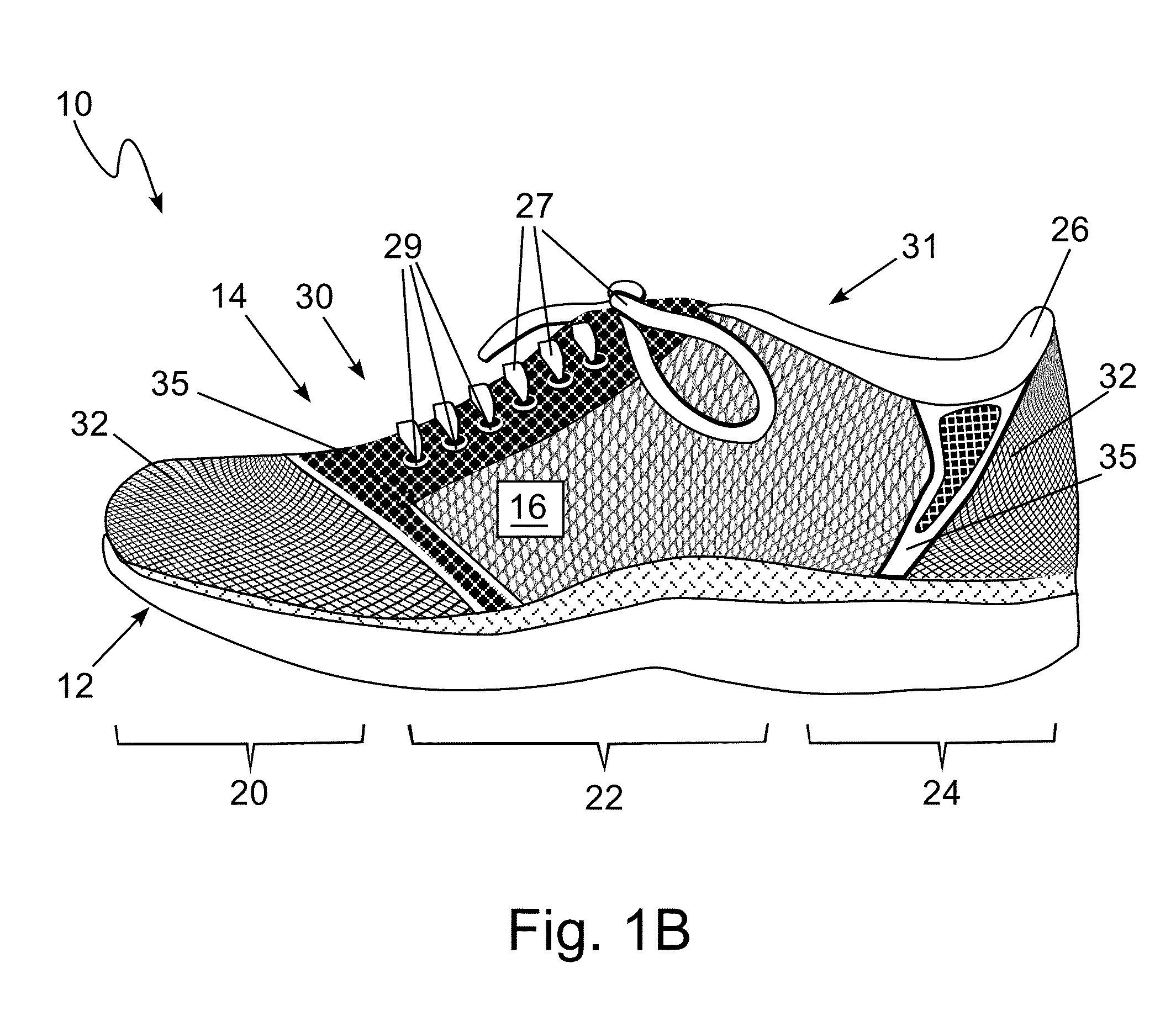Patterned Plexus of Filaments, Method of Producing and Articles Containing Patterned Filaments
a technology of filaments and filament filaments, applied in the direction of braids, pedestrian/occupant safety arrangements, shoes, etc., can solve the problems of easy dislocation, less than ideal products of conventional means of weaving and braiding of yarns, threads, other filamentous materials, etc., to achieve greater flexibility, improve performance, and improve the effect of enduran
- Summary
- Abstract
- Description
- Claims
- Application Information
AI Technical Summary
Benefits of technology
Problems solved by technology
Method used
Image
Examples
Embodiment Construction
[0059]Aspects and details of the present invention comprise filament arrangements, plexus or structures, methods of fabricating filament arrangements or structures, footwear and other articles having one or more filament arrangements, for example, a plurality of filament structures, combined to produce a single filament structure which would be useful in making footwear and other articles. The filament structures may also be used in non-footwear applications, for example, to provide versatile sports accessories, sporting goods, bags, containers, protective clothing, and the like. Aspects of the present invention can also be used in the fabrication or construction of materials, for example, fiber-re-enforced or composite materials, where the filament structures disclosed herein can provide the structural framework upon which a matrix material can be retained.
[0060]FIG. 1A is a perspective view of an article of footwear 10 according to one aspect of the invention, for example, having ...
PUM
 Login to View More
Login to View More Abstract
Description
Claims
Application Information
 Login to View More
Login to View More - R&D
- Intellectual Property
- Life Sciences
- Materials
- Tech Scout
- Unparalleled Data Quality
- Higher Quality Content
- 60% Fewer Hallucinations
Browse by: Latest US Patents, China's latest patents, Technical Efficacy Thesaurus, Application Domain, Technology Topic, Popular Technical Reports.
© 2025 PatSnap. All rights reserved.Legal|Privacy policy|Modern Slavery Act Transparency Statement|Sitemap|About US| Contact US: help@patsnap.com



